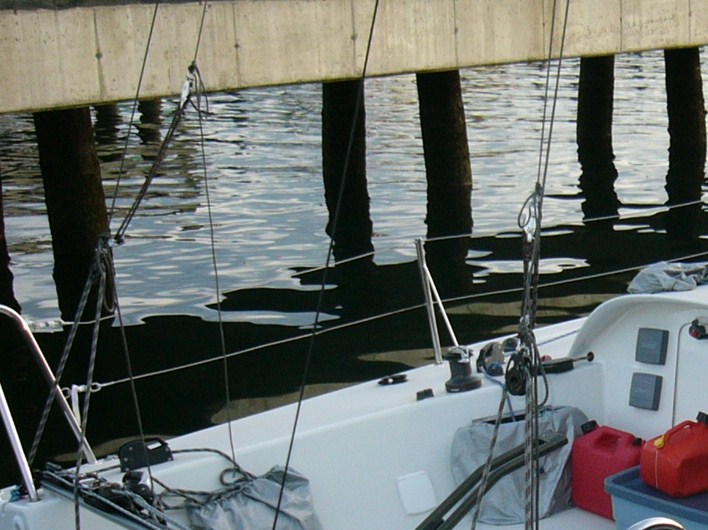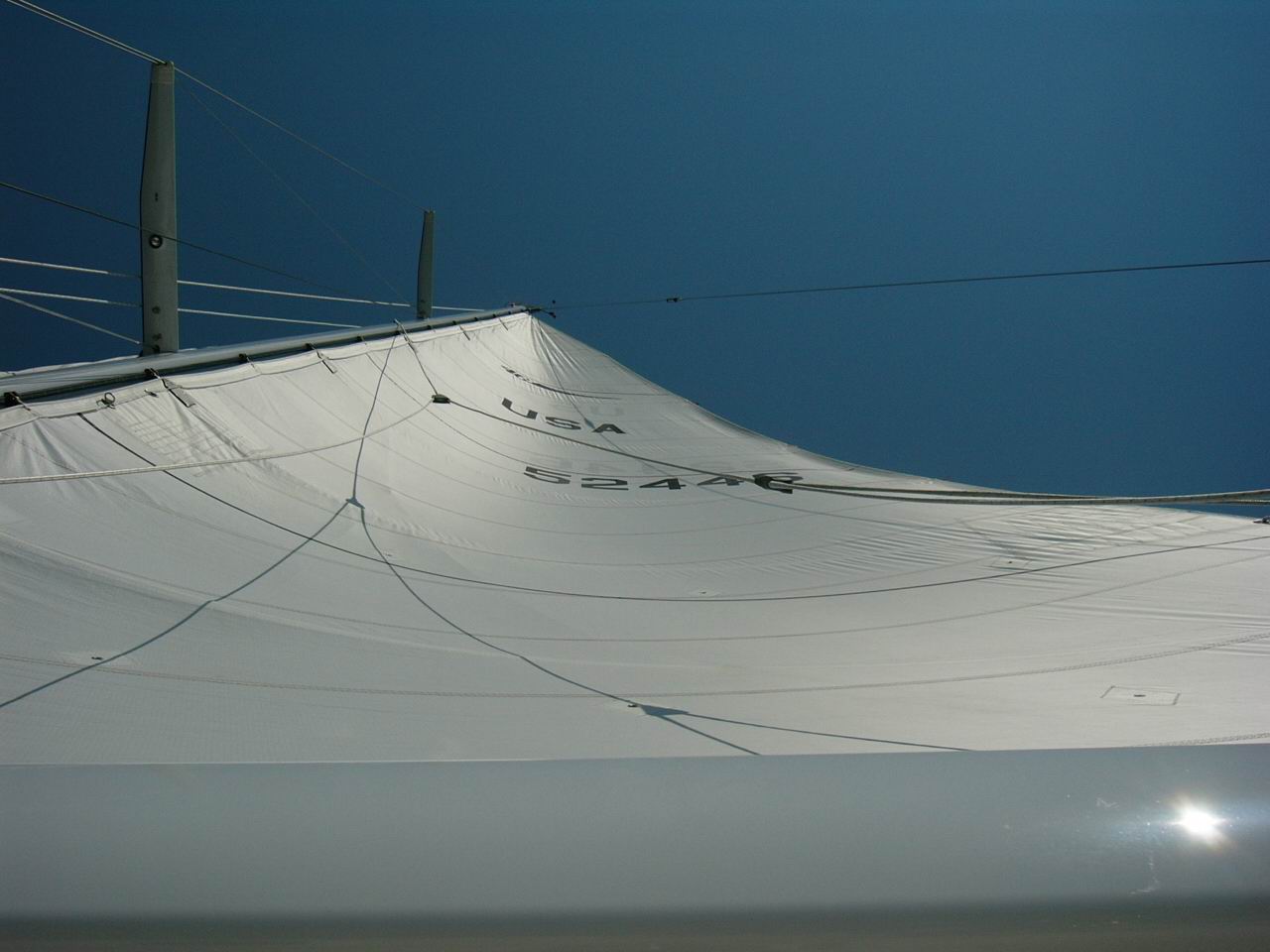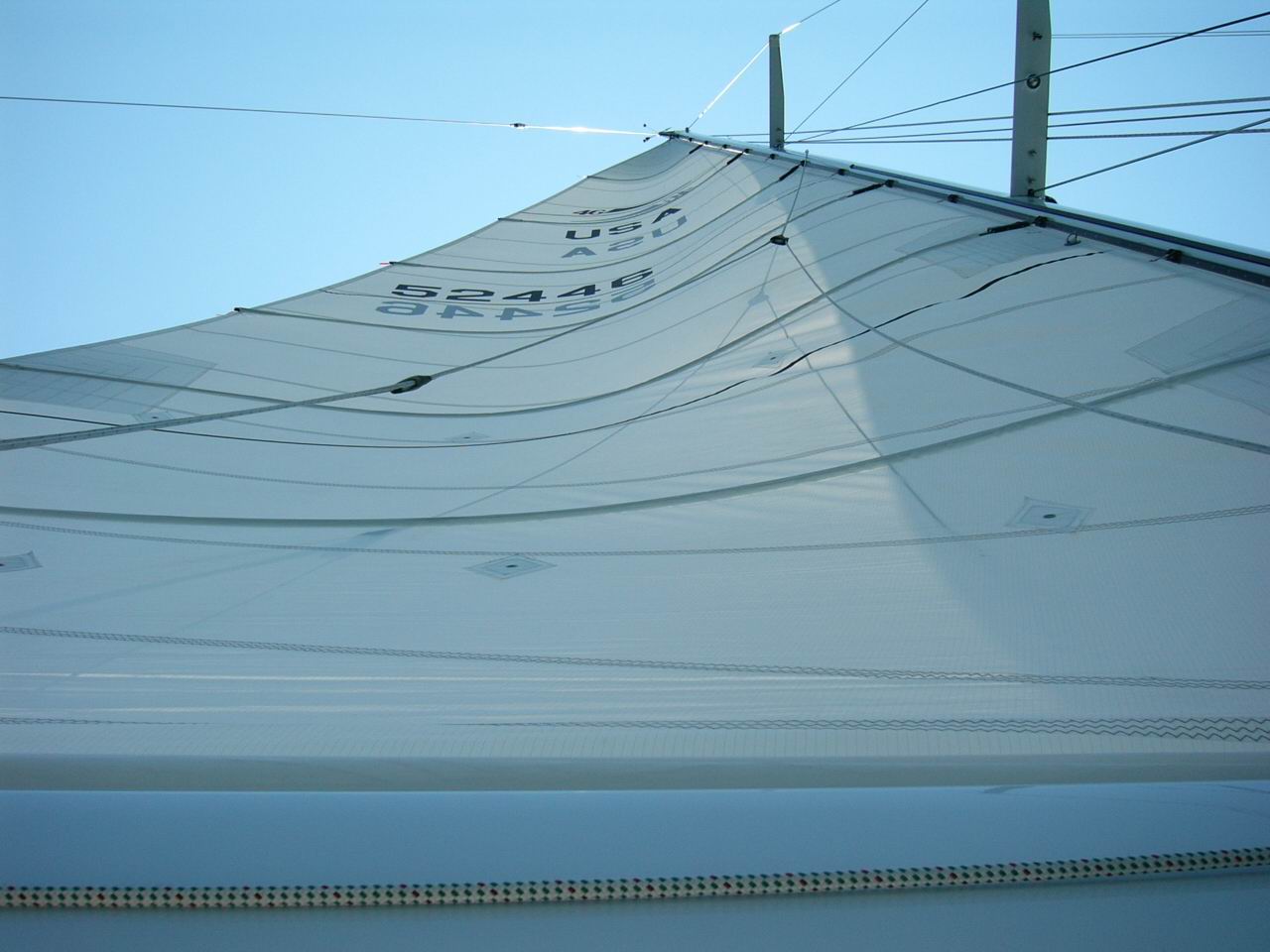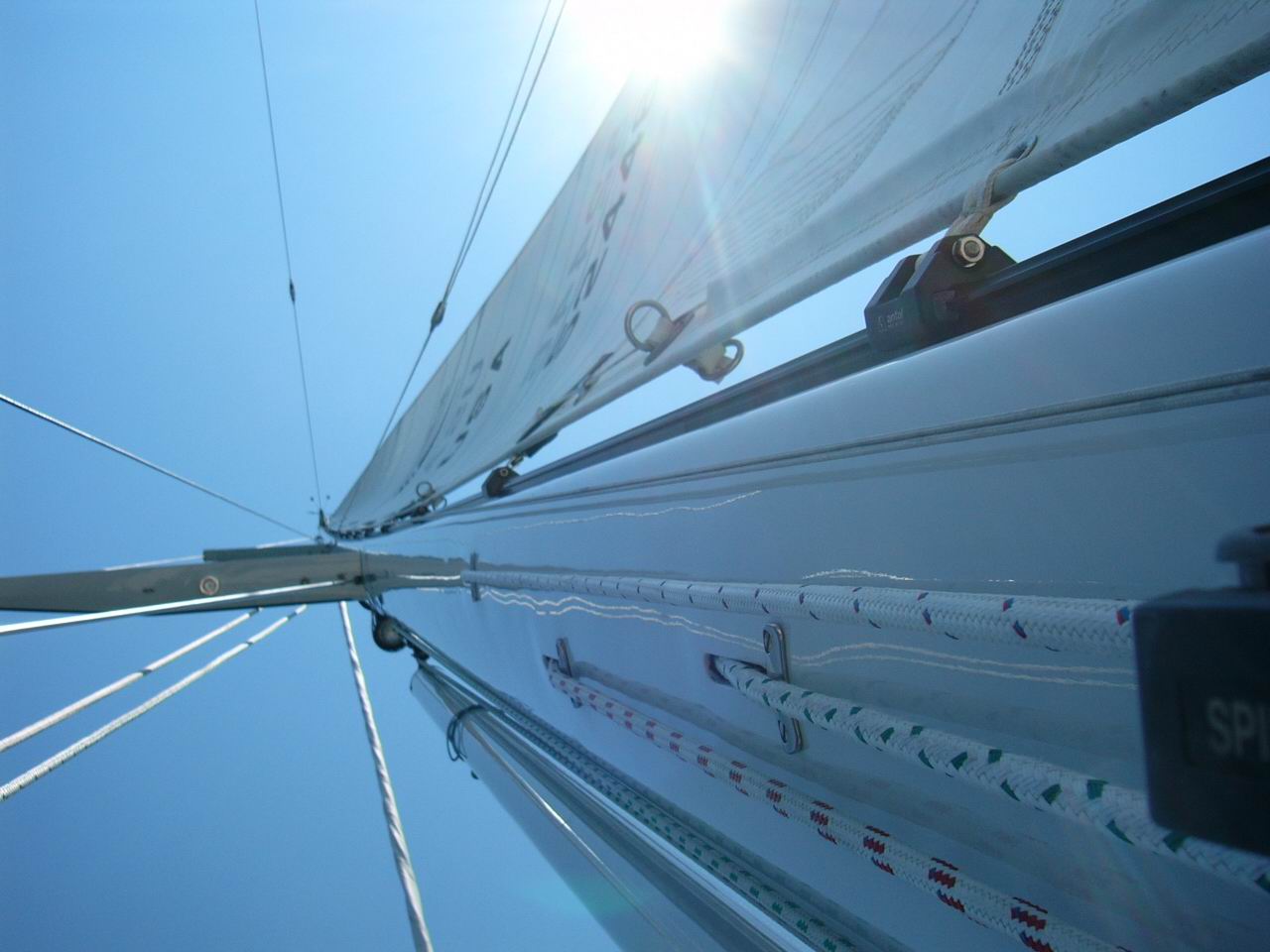Running backstays, commonly called simply “runners” are used not only to oppose the cutter stay on boats so rigged, they can also be used as a fine tune for mast, and so, sail shape.
During the course of the series on Full Length Battens, I received an email question from a fellow named Chris who owns a Condor 40 Trimaran. This post is more of a one way monologue with me answering his question rather than the usual essay but the information is all valid regardless.
This fellow is asking basically a sail shaping question.
His note to me in italic red, my comments in bold black. His question in blue italics.
Very interesting article Joe. On my condor-40 tri I have no back stay (Cooper comments: Not in the sense mono-hull owners recognize a backstay. He has two, one on each side so, among other things, his mainsail can have a big(er) roach unencumbered by a single standing backstay) and my spreaders are swept back however they are set up supporting diamond wires never connecting to the deck. (Cooper comments: These are known as Diamonds and are rarely seen on most normal “yachts”-Multi hulls and various skiff classes, yes, for all sorts of reasons.)
My side stays (Cooper comments: What mono-hull sailors would recognize as the “cap shrouds”) run from the top of the mast to the amas and are aft of the mast base eliminating the need for a fixed back stay. I do have running back stays (Cooper comments: Language or choice of words is important here: What he calls “running backstays” are almost certainly “TOPMAST running backstays”, again to do with the roach-see above) that are combined with an intermediate running back stay. Both runners are adjusted via a 2-1 purchase and then a 2 speed wench. The intermediate runners also have their own adjustment via an 8-1 car assembly on the cabin top. All very slick. My question since these are new to me is how do I know how much tension to load the primary and secondary running back stays? And with my wide boat I have bunji cord that pulls the unburdened back stay far to the side so it does not chafe the sail in most points of sail. Thanks in advance. Oh yes Happy Thanksgiving today.
End of his note to me.

A closer look at the type of detail Chris is describing-Topmast runners AND lower or check stays attached to the topmast backstays. You can see the adjustment tackle on the lower, intermediate “check” stay. Because this boat is small, a Mini 650, it is possible to adjust this stay using this tackle most of the time.
I understood/understand the bulk of his description on the runners. What I did not quite get is this statement:
“The intermediate runners also have their own adjustment via an 8-1 car assembly on the cabin top”.
If the intermediates runners are connected to the topmast runners like the arrangement on the Mini pictured above…How do the lower ones, the intermediates, get to the cabin top? Do they for instance go into the mast then down and out and aft, like a halyard? This would give you the option of adjusting the intermediates while not adjusting the topmast stay. This has done on occasion on mono-hulls, although it is losing because it is not every accurate because the spar can still move around the sheave in the mast. Ideally the runners and backstays connect directly to the spar so that once adjusted it stays adjusted.
Regardless this is the answer to your question:
Both runners are involved in sail trim, the overdrive or the “final gear” part of the overall sail trim as follows.
The topmast backstays will control the head-stay sag and mast bend like the “regular” backstay on a mono-hull. And likewise the check stays (or lower runners or intermediate runners-Depends on what country the speaker is from…) will control the mast bend in the middle of the spar.

This shows the mainsail shape of a 45 footer, prior to being “set-up” for the (increasing) wind conditions. The other image below shows the mainsail getting flatter and smoother by use of the topmast backstay. Here the sail is too full and there is not enough luff tension-Cunningham set up. The stings floating around are the lazyjacks.
Via these two adjustments the topmast backstay will tension the head-stay reducing stay sag and improving pointing and making the sail flatter. They can also contribute to the mast bend if the mast is so designed.

This is the final set up for this mainsail on this trial. You can see how the sail is flatter then in the previous image.It is starting to blow back because the breeze went from 11 kts. to about 16-17 kts. in the time we were getting set up and the headsail had not been adjusted too match the harder breeze. The bulk of this flattening was by virtue more backstay tension
The intermediate runner controls the mast bend in the middle of the spar. If the runner is tight, the mast will be straight. If the intermediate is not as tight the mast will bend a bit and so flatten the mainsail too.
Try this: At the dock one day set up the runners to what looks/feels like “normal”. Go forward and look up the mast to see what kind of bend there is, especially around the middle of the mast, where the intermediates connect.
TIP: You can usually reference this bend by securing the main halyard to the tack fitting and then putting a reasonable amount of tension on the halyard, to keep it tight and straight. Then measure the fore and aft length dimension of the spar. When doing these sightings, relate the fore and aft dimension of the spar to the distance between the back of the spar and the halyard. If it is, by eyeball about the same as the mast dimension then that is known as one diameter. So if the spar is 6 inches F&A, then you have 6 inches of mast bend at that point minus the amount the halyard is aft on the tack fitting.
Then go forward and wiggle the head-stay, to get a sense of how tight it is.
Return aft and tension the runners again so that there is a difference in the feel/load. Repeat steps above, sight the spar and feel the head-stay
If you are OK with it, go and tension the runners again to “Max” and repeat the sightings and wiggle.
THEN adjust the lower runner through, I am guessing, the tackle you refer to on the cabin top.
The question about “How much to load them” has a couple of answers.
1. You can go sailing in a variety of winds and adjust the settings until the boat feels best in that wind sped.
2. You can wind them up pretty tight and forget it-You probably will not pull anything off the deck, but it is always possible
3. You can spend a chunk of change on a digital load meter and put that on the runners or the headstay. Most of the high end sailing instrument makers have such a device that works with Navtec fittings. Personaly I would use the eyeball method.
In the big picture backstays (or a single normal backstay on a mono-hull)can be used to adjust the mainsail shape via the mast bend (in conjunction with intermediate runners if installed) and the head-stay sag. All of which are fine tune adjustments rather like the over drive on a car. How much load is applied varies with the basic shape of the sail the flexibility of the rig and a host of other variables.
Google+
